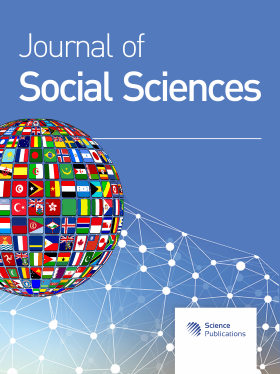The Development of Potential Problem Solving of Students, Mahasarakham University
Abstract
Problem statement: The problem is a state of difficulty that needs to be resolved. It is involve in daily life of everyone including the students who study in University. Basically, they have to face with the physiological and psychological change; the significant problems also exactly affected to them. These situations led them to be the risk group in which they would have inappropriate behaviors. Consequently, the quality of life of the students, their families and society would impact eventually. Approach: To (1) describe the potential of problem solving of the students of Mahasarakham University, (2) compare the potential of problem solving between the group of students, (3) purpose the strategies to improve problem solving potential. This descriptive research using cluster random sampling, to define the sample, which consisted of 355 students, separated by 3 group. They were: (1) Human-Social Science, (2) Science and Technology and (3) Health Science. The research instrument was the problem solving inventory which comprised of three components; (1) problem solving confidence (2) approach-avoidance style and (3) personal control. Descriptive statistic and inferential statistic (t-test, F-test) was applied. Results: The majority of the subjects were female (77.2%) the mean age of 18.66 and more than 55.8% were over 19 years old. Most of them were studied in the area of Human and Social Science (69.3 %). The problem solving potential level of these students in overall were in moderate level with the mean scores of 102.95. To divided by group, their mean score were: (1) the Human-Social Science group = 104.85 (2); the Health Science group = 94.86 and (3) the Science and Technology = 105.32. Most of students who able to solve the problem quite well were coping with the positive approach by did not avoiding the problem. In addition, they played attention with problem analysis, using emotional control and using the process of decision making. In contrast, the other group of students who unable to solve the problem, the research found that some of them were out of emotional control. They were avoidance and lack of self confident to solve the problem. It was not significantly different between gender. (t = 0.956, p>0.05), but it is significantly different between group. It shown that the Health Science group were able to solve the problem better than the Humanity-Social Science and Science and Technology groups, (p = 0.000). By the way, it was not significantly different between the Humanity-Social Science and Science and Technology groups (p = 0.839). Conclusion: The findings suggested the strategies of problem solving potential development should be develop by covering these elements: (1) to develop the strengthening of mental and insight (2) to develop the learning system and (3) to develop leadership more than that it should develop the instructors role in teaching by using problem solving technique including with supportive system from the academic institute.
DOI: https://doi.org/10.3844/jssp.2010.47.49

- 6,330 Views
- 3,940 Downloads
- 0 Citations
Download
Keywords
- Problem solving
- strategies for students
